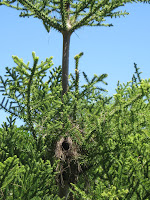Explore native parkland by the beach
 |
| Wulgurukaba means 'canoe people', the traditional owners of this land. |
Wulgurukaba Plant Trail was established by the community at Saunders Beach in 2012.
In Feb 2011, Cyclone Yasi crossed the coast at Mission Beach 220 kms to the north, delivering strong winds and storm surge which destroyed about one third of the native flora at Saunders Beach.
It is hoped Wulgurukaba Plant Trail will assist the natural dune stabilisation and parkland restoration process.
Along the trail you will find interpretive signage to explain the many and varied ways Aboriginal people have used the native plants as a resource for food, medicine, shelters, fishing nets, dilly bags, spear, boomerangs and canoes.
Saunders Beach 25km north of Townsville.
Home to about 200 local residents
(not counting the crocs).
Free camping at Saunders Beach Park Rest Area with a kids playground and covered picnic tables.
Access to boat ramp at Althaus Creek and close to the mouth of Halifax Bay.
Australian Pied Oystercatchers
commonly found wading along the coastline, probing the sand in search of molluscs, sand worms and crustaceans
Sand Bubbler Crabs
Tiny crabs create spectacular sand sculptures along the beach. At low tide they gobble up damp sand, filtering out the meiofauna to feast upon and spitting out sand balls to form bubble patterns outside their burrows.
 |
| Creations of Nature are everywhere you look |
 |
| Beach She Oak nuts are scattered on the sand. Green needles from the tree can be chewed into a ball to numb toothache. Inner bark is smashed and mixed with water to make a medicine gargle for treating sore throats. |
This Double-Barred Finch was busy building it's nest in a nearby tree.
 |
| Who knew there were so many different mangrove varieties, and many different uses, but beware of the blind-your-eye mangrove! |



























